Michigan hop crop report week of June 26, 2025
Hops are at the wire and pushing sidearms across much of Michigan.

Weekly weather review
With the recent heatwave over the last few days, accumulated growing degree days (base 50 degrees Fahrenheit) have increased and are now close to the long-term average across much of Michigan, although still considerably less than this point in the growing season last year. With the recent bout of thunderstorms, accumulated precipitation across the lower peninsula is also close to the long-term average.
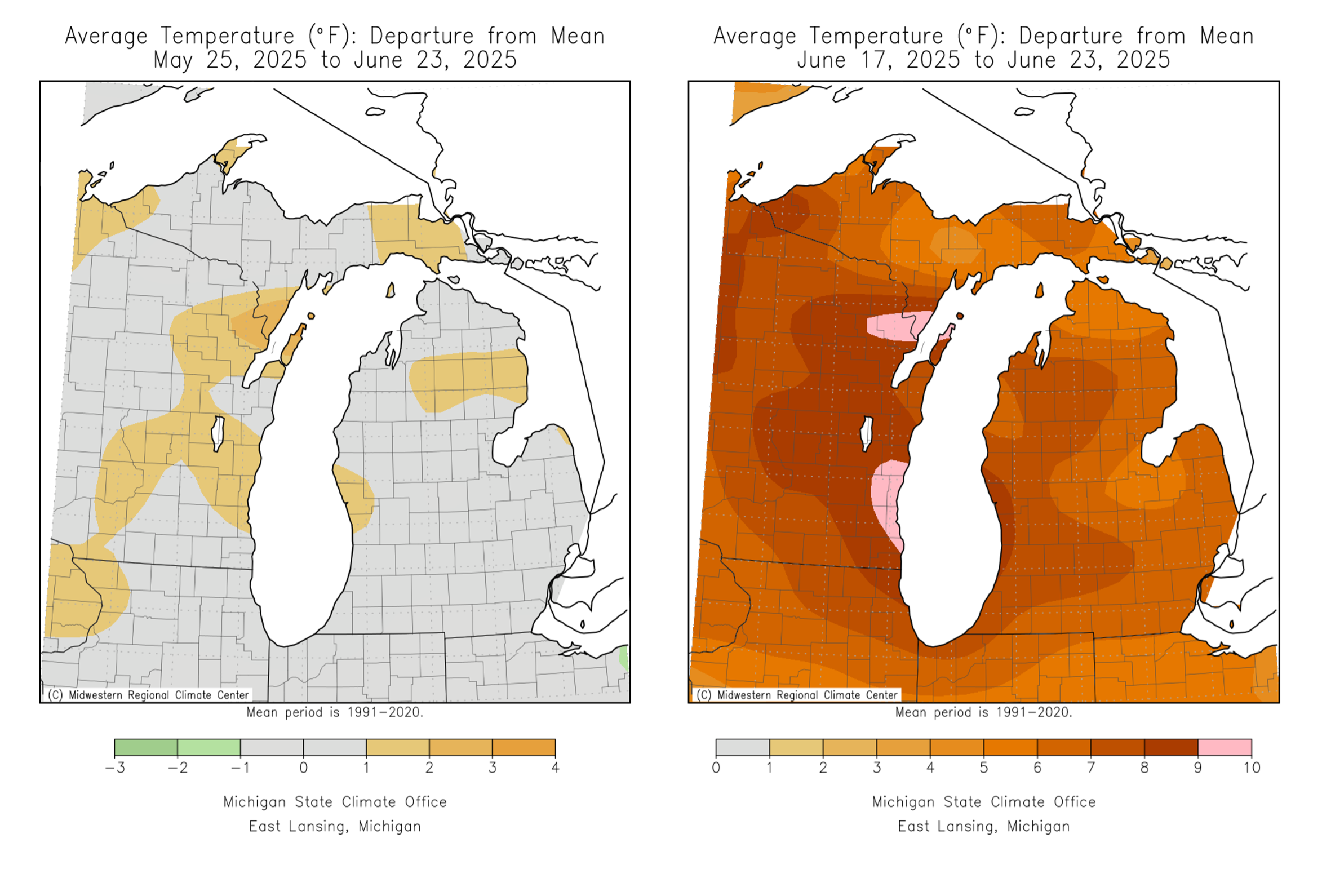
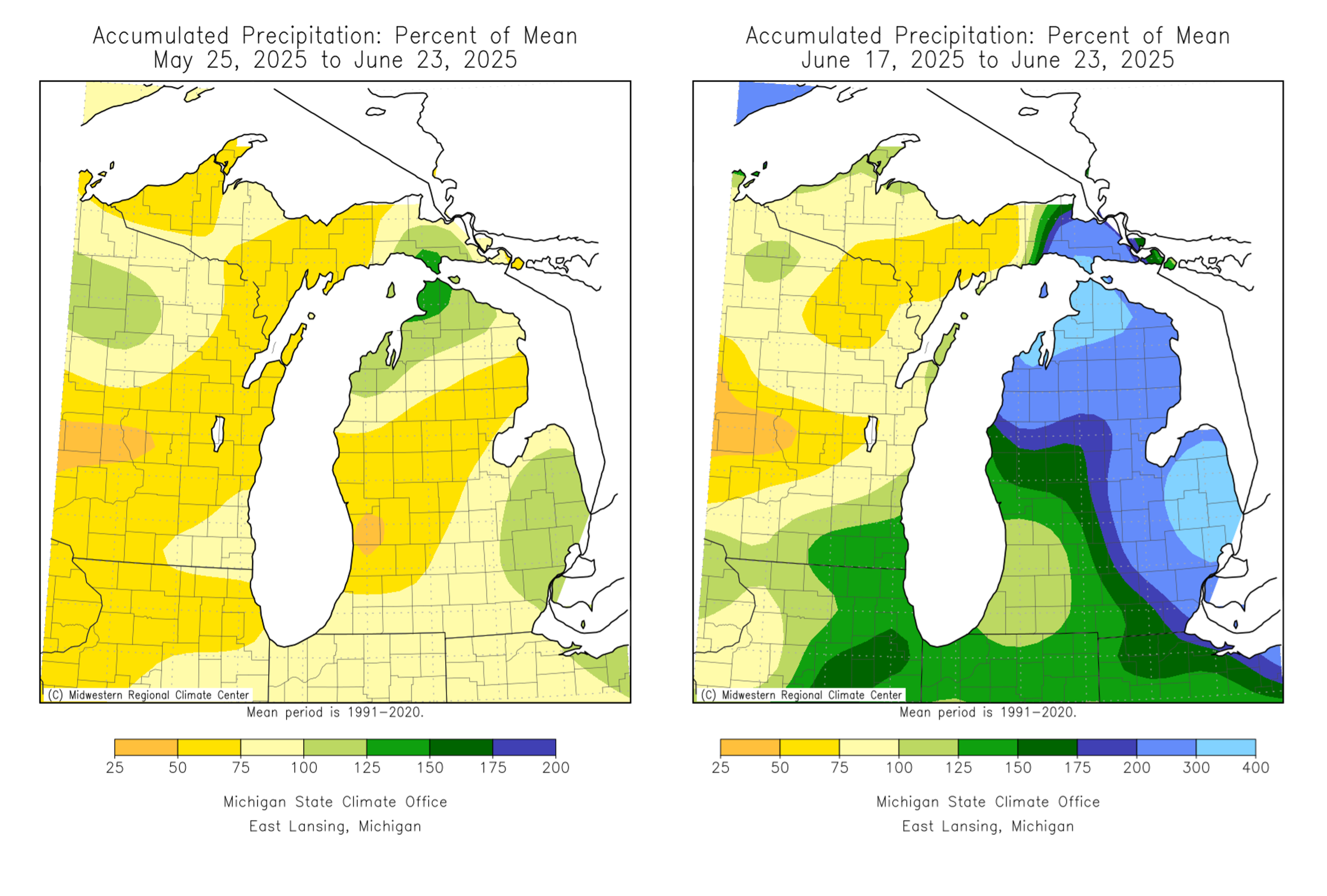
Despite average precipitation since March 1, a swath west of Michigan’s Thumb is still experiencing moderate to severe drought conditions.

Accumulated growing degree days (Base 50 F) range from over 420 in the Upper Peninsula and approaching over 1000 in certain areas of southern Michigan. GDD (50) are near the long-term average across most of state.
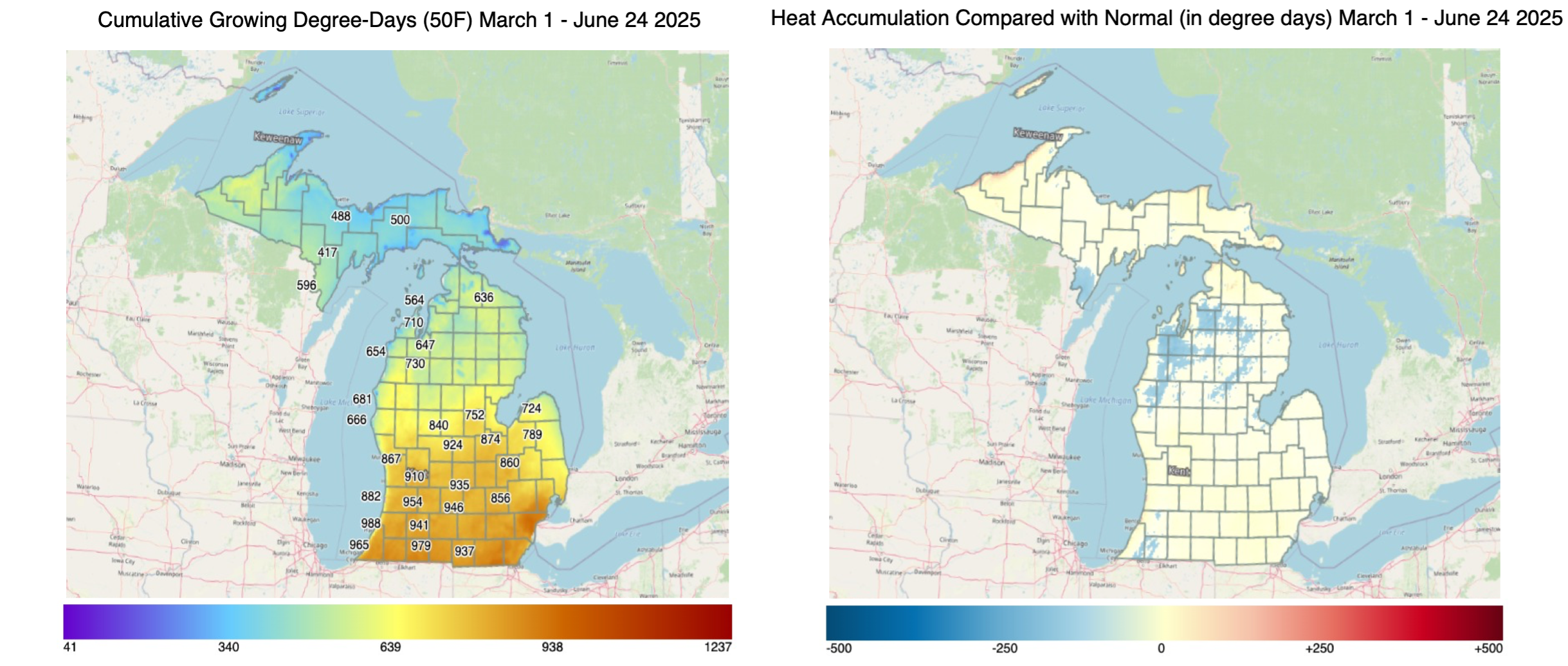
Looking ahead
Scattered showers and thunderstorms are possible through Friday, June 27. It will be partly sunny and warm Saturday with scattered showers developing again Sunday-Monday. High temperatures will warm to the upper 70s north and upper 80s south through this weekend. Lows will be in the 60s Thursday-Sunday.
Medium range outlook calls for an active storm track across the region with near to above normal temperatures and rainfall. From June 25-30, the forecast suggests 0.25-2 inches of precipitation depending upon location.
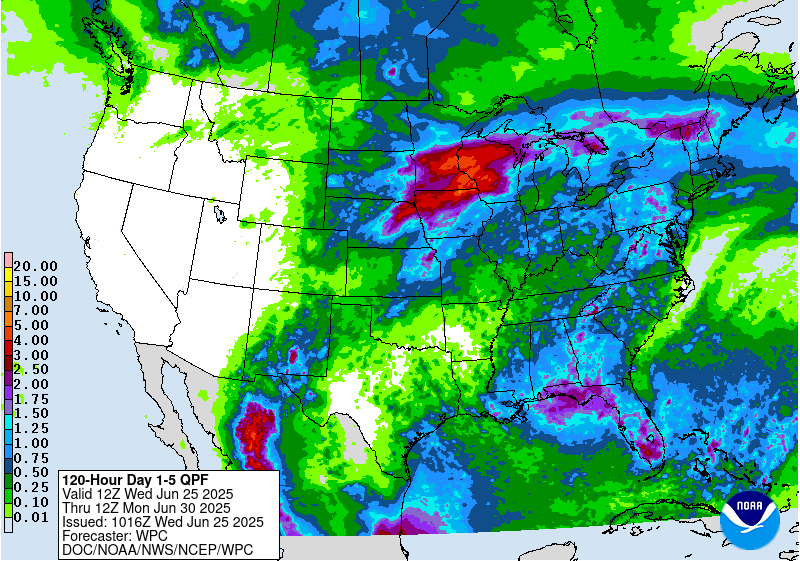

For the most recent Michigan State University agriculture weather forecast, visit: MSU Extension Agriculture Weather.
Stage of production/physiology
Hops across Michigan are in Principal Growth Stage 2: Formation of Side Shoots, 3: Elongation of Bines, 5: Inflorescence emergence, and potentially 6: Flowering (burr stage) depending upon growing location.

In the field
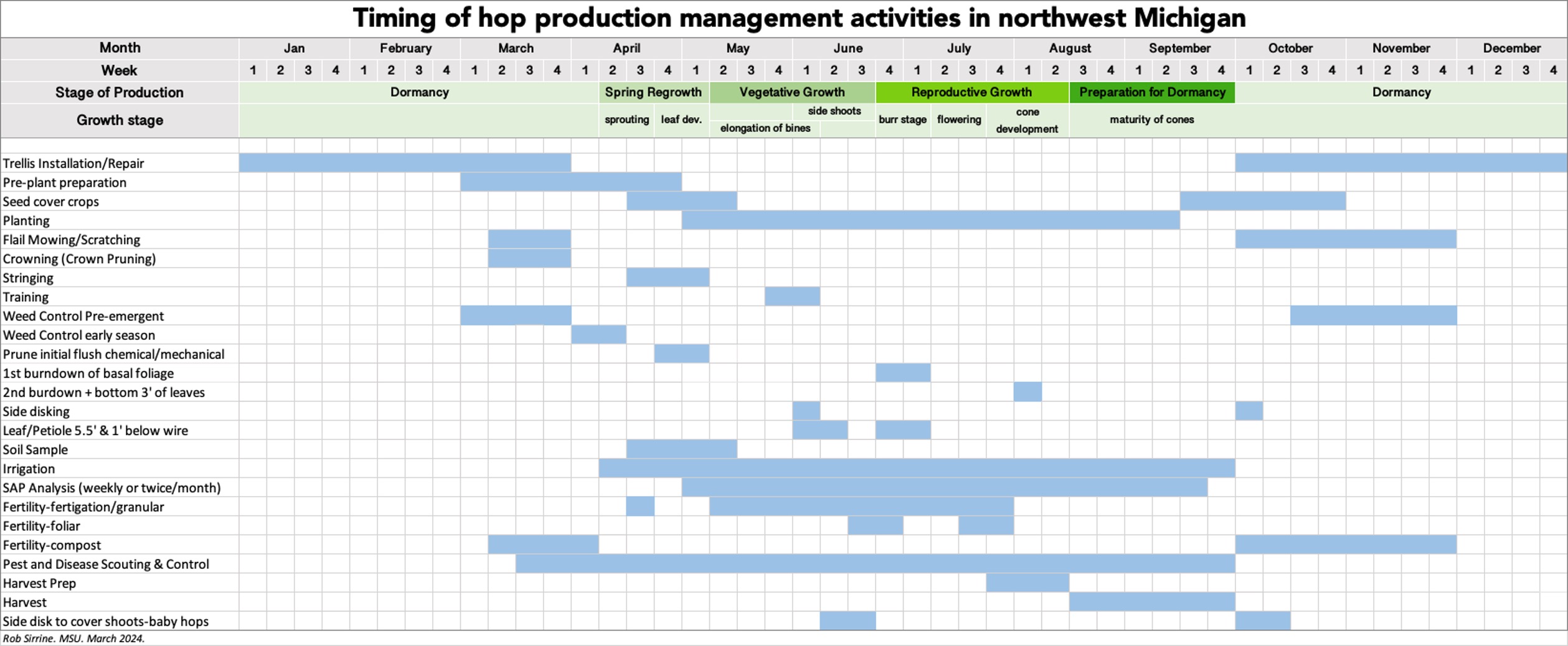
Plants are in the vegetative growth stage. Growers are actively scouting, fertigating, applying plant protection products, and pulling leaf plus petiole samples for SAP or nutrient analysis. While there are no steadfast numbers for optimum leaf nutrient levels, there are preferred ranges. As plants shift into reproductive growth, many growers are applying micronutrients often based upon these optimum range (see below).
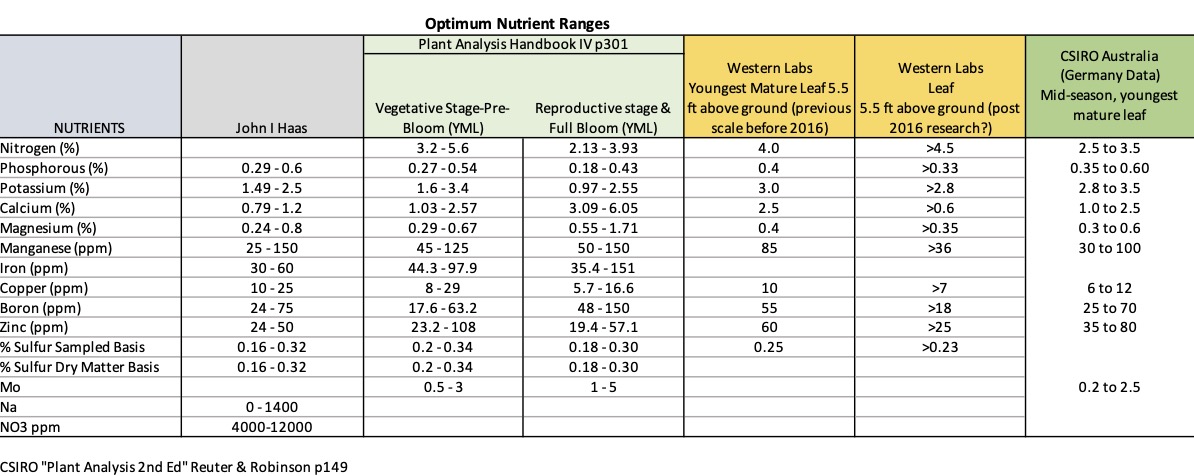
Leaf and petiole nutrient labs:
- Agro-Liquid, St. Johns, MI
- A&L Great Lakes, Ft. Wayne, IN
- New Age Laboratories, South Haven, MI
- Brookside Labs, New Knoxville, OH
SAP analysis labs:
- Agro-K, Minneapolis, MN
- Crop Health Labs, Bellville, OH
- New Age Laboratories, South Haven, MI
Sincere thanks to the Michigan hop producers who provided timely input for the Michigan Hop Crop Report.
Pest management
For pest information, please see the June 26, 2025 Hop Pest Report.
Stay connected!
For more information on hop production practices, please sign up for the hop MSU Extension Newsletter, the free MSU Hop Chat Series and continue to visit Michigan State University Extension’s Hops webpage or the MSU Hops News Facebook.
If you are unsure of what is causing symptoms in the field, you can submit a sample to MSU Plant & Pest Diagnostics. Visit the webpage for specific information about how to collect, package, ship and image plant samples for diagnosis. If you have any doubt about what or how to collect a good sample, please contact the lab at 517-432-0988 or pestid@msu.edu.
Become a licensed pesticide applicator
All growers utilizing pesticide can benefit from getting their license, even if not legally required. Understanding pesticides and the associated regulations can help growers protect themselves, others, and the environment. Michigan pesticide applicator licenses are administered by the Michigan Department of Agriculture and Rural Development. You can read all about the process by visiting the Pesticide FAQ webpage. Michigan State University offers a number of resources to assist people pursuing their license, including an online study/continuing ed course and study manuals.
This work is supported by the Crop Protection and Pest Management Program [grant no 2024-70006-43569] from the USDA National Institute of Food and Agriculture. Any opinions, findings, conclusions, or recommendations expressed in this publication are those of the author(s) and do not necessarily reflect the view of the U.S. Department of Agriculture.



 Print
Print Email
Email